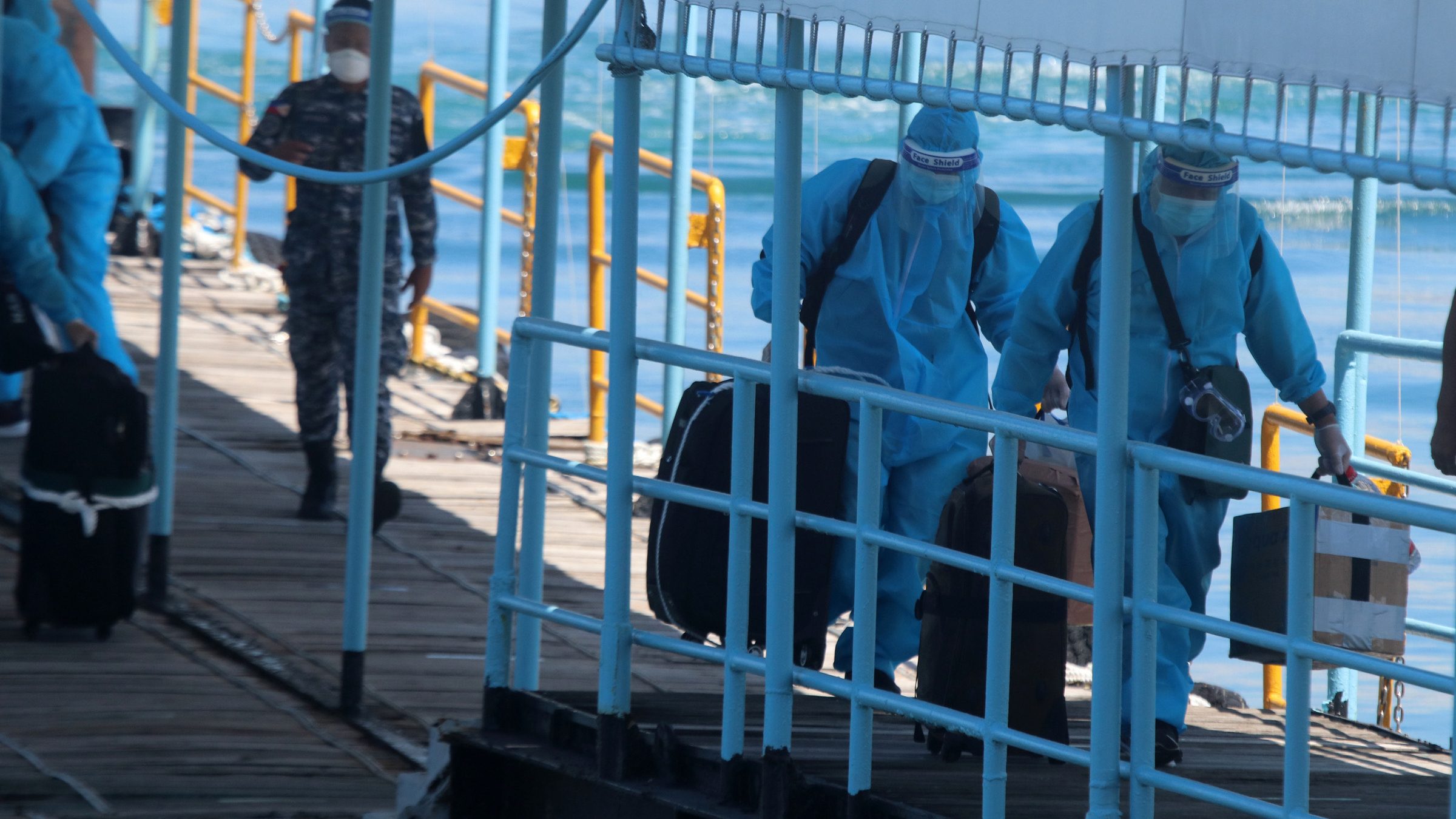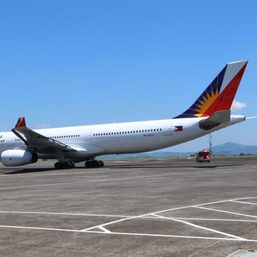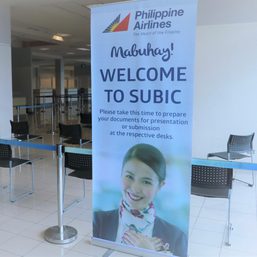SUMMARY
This is AI generated summarization, which may have errors. For context, always refer to the full article.

Subic started operations as a crew change hub on Thursday, September 10, with the arrival here of 5 Filipino seafarers who finally disembarked after being stranded aboard their ship for several months due to port restrictions brought about by the COVID-19 pandemic.
Subic Bay Metropolitan Authority (SBMA) Chairman and Administrator Wilma T. Eisma said this was the first batch of crewmen to arrive here after Subic was designated by the Inter-Agency Task Force for the Management of Emerging Infectious Diseases (IATF) as a hub for international crew change.
The 5 Filipinos disembarked from the MV Dapeng Star, a liquefied natural gas (LNG) tanker based in Hong Kong.
“The operation went without a hitch and was over in just a matter of 3 hours,” Eisma said. She recounted that at 7:40 am, a tugboat left the San Bernardino jetty here to meet up with Dapeng Star, which had anchored near Grande Island at the mouth of Subic Bay.
The tugboat carried personnel from the Maritime Industry Authority (MARINA) and the coast guard, who conducted the initial health check-up of the inbound sailors. The authorities made them suit up personal protective equipment (PPE) before disembarking.
“At 10 am the tugboat was back at the jetty, the 5 seafarers in blue PPEs got off, had their baggage checked by K-9, boarded a van to the One-Stop-Shop (OSS) at the Subic airport where they got swabbed for RT-PCR test and had their documents processed by the Bureau of Quarantine and Bureau of Immigration,” Eisma noted.
“At exactly 11:14 am, or just over 3 hours, the seafarers were already departing for the Manila Grand Opera Hotel, which shall serve as their quarantine facility for 14 days,” she added.
The opening of the Subic crew change hub was expected to ease the current congestion in Manila Bay where merchant ships with Filipino crewmen await their turn to disembark their crew and take in fresh personnel. The Philippines is among the biggest suppliers of manpower in the international shipping industry.
Eisma pointed out that the problem on crew change does not only concern crewmen longing to go home to their families, or the congested ports where ships await their turn to disembark their crew.
“It is, in fact, a problem of huge proportion because it affects the global supply chain,” she said. “With the start of crew change operations here, Subic becomes a part of the solution to this global problem,” she added.
The Department of Transportation (DOTr), which spearheaded the inter-agency project, said the Subic operation was part of the “Philippine Green Lane” put up for the speedy and safe travel of seafarers and swift crew change during the COVID-19 pandemic. The other crew change hubs were the Port of Manila and Port Capinpin in Bataan.
Subic was designated as a crew change hub in July, and was formally opened on August 22. However, operations here only involve point-to-point embarkation and disembarkation pending approval of the second phase where inbound seafarers could quarantine in local hotels after their RT-PCR test.
DOTr Assistant Secretary Narciso Vingson, who supervised the maiden crew change operation in Subic, stressed that crew change protocols were strictly observed and that a “no-contact” policy was put in place to ensure the safety of the seafarers and the attending personnel.
Vingson said that prior to debarkation, the seafarers were made to undergo customs, immigration and quarantine (CIQ) procedures on board the ship. They were then debriefed, RT-PCR tested and processed at the Subic OSS, before transported to a mandatory quarantine facility in Manila. – Rappler.com
Add a comment
How does this make you feel?





There are no comments yet. Add your comment to start the conversation.